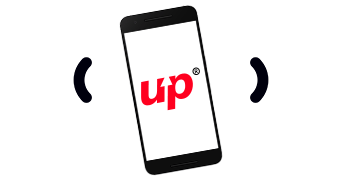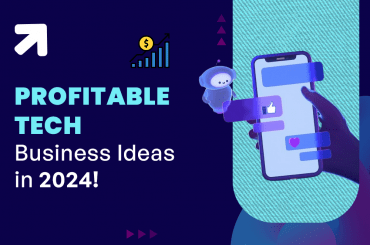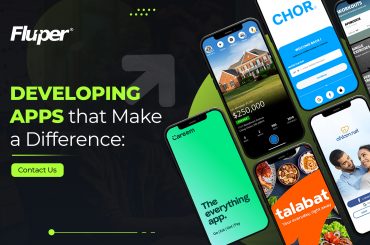What is Mobile App Monetization?
Mobile app monetization is the method of making money from a mobile app without requiring a download cost. Users are becoming less willing to pay for any application, whether it be for news or gaming, as there are more free mobile apps available across the entire digital ecosystem.
As a result, app developers must take into account a variety of app monetization strategies. A mobile app can be made money via a variety of monetization strategies, such as in-app advertising, in-app purchases, the freemium model, and more, by utilizing its user base. But whether monetization tactics will be the most effective depends on a variety of factors.
Mobile App Monetization Techniques
Offering both free and paid versions of your app is a common method of mobile app monetization. According to this strategy, app developers will either remove some features from the free app to invite users to upgrade to the paid version or monetize the free app with in-app advertising.
The model for the Paid and free App Mobile Versions
There are several ways that a mobile app can be made available to users, including through a paid model or a free model.
In the paid model, users must pay a one-time fee or subscription fee to download and use the app. This model is typically used for apps that offer premium features or functionality that users are willing to pay for.
The free model makes the app available for download at no cost to the user. However, this model may include advertisements or in-app purchases, which allow users to access additional features or content within the app for a fee. Some apps may also offer a combination of paid and free features, with the option for users to upgrade to a premium version for a fee.
Ultimately, the choice between a paid and free app model will depend on the nature of the app and the target audience. Developers may decide to use a paid model if they believe that their app offers valuable and unique features that users are willing to pay for, or if they want to generate revenue through subscriptions. On the other hand, a free app model may be more appropriate if the app is intended for a broader audience and the developers plan to generate revenue through advertisements or in-app purchases.
Model of the free App with in-App Purchases
In-app purchases, sometimes known as IAP, are another well-liked method of app monetization.
The main features of the app and the app itself are typically free. To advance in the app more swiftly, such as to get more lives in a gaming app or some premium features in a dating app, the user must switch to the pay-to-play option.
Occasionally, users may still have access to premium services or functionalities without having to pay. They can use the app for free forever if they have the patience to wait for certain features to be unlocked or if they use it frequently enough. Other times, these choices won’t be available, and the app creators will only make a limited amount of items available for free and through in-app purchases.
The Free App with a Subscription Model
Some programmers decide to make subscription-based, free apps. Using this strategy, the app is made freely downloadable with limited access to the provided content or services. Users must sign up for a membership plan to access all features. This method of app monetization is frequently used by content- or service-focused apps, such as news apps or the meditation app Headspace. Customers looking for similar information can instantly find the free software in app stores.
This is excellent for helping developers build a foundational user base and nurture it into a subscription base for premium apps.
Using a Premium App
These apps offer rare value. Productivity apps use this most.
If you adopt this route, make sure your apps offer enough value or unusual features to please customers. If not, it would be challenging for you to increase the number of users required for your app to generate revenue.
The Partnership Structure
If an app is exceptionally well-liked within a specific niche market, businesses in that area may approach the app developer for sponsorship opportunities in order to get their brand in front of your app customers.
Making plans for the next app can therefore take into account the user base the app is meant to reach as well as the kinds of businesses that might be interested in that audience. Brand sponsorship, partnerships, or acquisition may potentially be worthwhile possibilities for income if the user base is substantial enough.
Mobile App monetization Techniques in 2023
Due to the fact that millions of mobile app monetization are currently in use and making huge sums of money for app developers, this business is flourishing. Let’s briefly examine the growth of mobile app revenue from 2014 to 2023 (estimated revenue for 2023 based on Statista’s study).
The continual creation of cutting-edge, value-driven apps is to blame for the rise in global app income. A result of such rapid growth is fierce competition among app developers. Owners of apps are curious about ramping up revenue-focused methods in light of this competition.
The success of an app business depends on the choice of the best app monetization strategy. A company’s app won’t be able to create stable revenue if the wrong monetization approach is chosen, which will result in the app’s demise.
Numerous mobile app growth hacking businesses offer advice and AI-based monetization solutions to app developers. They support app developers in beginning work on the potential for revenue growth and monetization in tandem with app development. This strategy gets an app ready to start making money soon after it launches.
FAQs
Why Is Mobile App Monetization Important?
Mobile app monetization is becoming a crucial issue for app owners all over the world because of the exponential rise in free apps made available through app stores over the past 15 years.
Only 10% of apps in the iOS App Store today demand payment at download, down from 77% in 2009. In the Google Play store, paid apps to make up about 31% of all mobile apps, which is a bit more.
Due to the shift toward free apps, app developers have to completely rethink how they make money from their apps.
App developers can utilize one of the following app monetization models to make sure an app’s revenue keeps increasing while maintaining an excellent user experience. As an alternative, they can use a hybrid app monetization strategy that combines two or more ways to make money.
Which Mobile App monetization Strategy is ideal for your app?
There are a number of factors to take into account when choosing which of the several Mobile app monetization tactics an app owner should implement for their app, as there are with anything in digital marketing. App developers frequently choose to use a combination of the aforementioned strategies to make money from their apps.
Increasing revenue through your platform, audience, content, or other channels is a goal of a mobile app monetization strategy. There are numerous monetization techniques. The most typical ones include in-app purchases, selling ad space, selling platform access, and more.
The following factors should be taken into account by app developers before choosing a monetization strategy:
What Functions Does the App Have?
Priorities come first. App owners should carefully assess the role and goal of their app—what issue does it address, and how? Not every app has the same potential for increasing money. Gaming apps are better suited to in-app advertising than news and entertainment apps, which benefit from subscription arrangements.
Who the Competition is?
Competitor analysis is crucial to knowing how an app fits in the market, as it is with all product development. Developers can learn which monetization techniques will be most effective by looking into similar apps in the market.
Who Is the Target Market?
Finally, app developers must be aware of their target market. They, who? What are they seeking? Most importantly, what are they prepared to spend money on?
Developers might attempt to construct a strategy—or a variety of strategies—to guarantee continued success by defining the aforementioned criteria.
How much money can an app make?
The user base, the ad network, and the selected revenue model are just a few of the variables that affect how much money an app will make. A popular app may frequently generate hundreds of dollars each month in revenue.
How Can I Pick the Best Monetization Plan for My Mobile App?
The optimum Mobile app monetization technique for your app can be chosen in no one-size-fits-all manner.
While in-app purchases might be a good way to fund a gaming app, for instance, in-app advertisements will be a better option if your app offers news content.
The decision-making process also heavily weighs the user experience. Will your target demographic and how they use your app be suited to the app monetization strategy?
To suit the platform and audience, various tactics may be needed for Android and iOS apps.










1 Comment
Hey I found amazing blog on google, the clarity in your post is simply great, and I could assume you are an expert on this subject